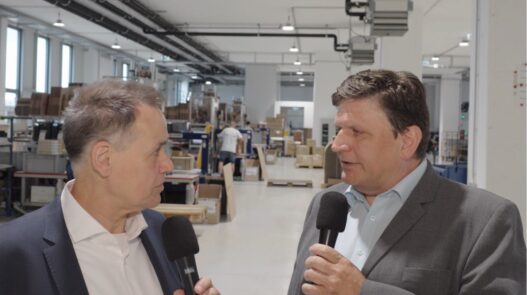How employees can be actively involved
Why technology on its own is not enough
Automation in warehouse logistics brings efficiency, transparency and predictability. But numerous projects show that, if employees are not convinced, even the best solution becomes a problem. Skepticism, uncertainty and lack of communication can impede progress.
On the positive side, companies that involve their teams at an early stage, reduce fears and work across departmental boundaries turn resistance into enthusiasm. In this way, automation increases efficiency, boosts motivation and creates trust and sustainable success.
Change needs strategy, not just technology
Automation does not work “at the push of a button”. It requires a clear strategy and precise planning.
Three crucial steps towards automation
- Needs analysis: Which areas can actually be automated? Where is the greatest benefit in terms of efficiency and throughput?
- Process understanding: Know all your processes in detail before machines are introduced. This is the only way to avoid errors and bottlenecks.
- Pilot phases: Test new systems in a clearly defined area, gain experience, optimize processes.
In this way, automation becomes not just a technical project, but an integral part of the company’s development.
People as a success factor
Automation changes workflows and thus the daily work of employees. Underestimating this aspect is risking resistance.
Success factors for employee engagement
- Communicate at an early stage: Make goals, processes and benefits transparent.
- Take fears seriously: Address job insecurity or skepticism openly.
- Involve employees: Proactively involve teams in planning, testing phases, and process optimization.
This is how trust is created. Employees become ambassadors of the new systems, not opponents. This boosts project success and strengthens corporate culture.
Change management meets logistics
Automation is an interdepartmental endeavor. IT, technology, warehouse management, all staff must pull together. Neglecting this aspect risks delays, inefficiency and frustration.
Key elements of change management
- Clear roles and responsibilities: Who controls, who tests, who optimizes?
- Regular communications: Actively maintain interfaces between IT, technology and warehouse operations.
- Training and further education: Prepare employees for new tasks and systematically expand their skills.
Well executed change management creates smooth processes and motivates the workforce to actively participate in the change.
Conclusion – Automation starts with people
Are you planning to automate? Don’t start with technology. Start with the people. Those who involve employees create trust, motivation and sustainable success.
Would you like to know how this works in practice? We accompany you from analysis to implementation and ensure that automation becomes a win for everyone.
You might also be interested in:
👉 BridgeBloX – The Surprising Power of a New Process Design


